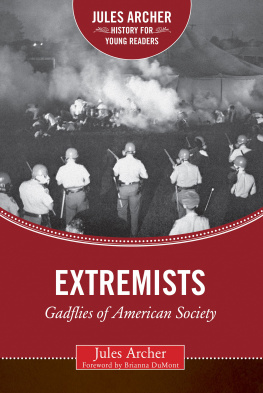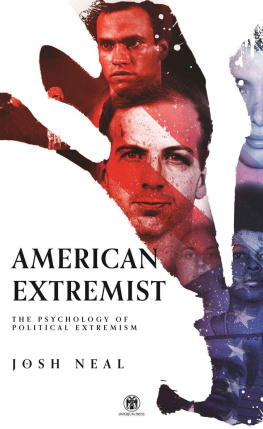
Engineers of Jihad
ENGINEERS OF JIHAD
The Curious Connection between Violent Extremism and Education
DIEGO GAMBETTA AND STEFFEN HERTOG
PRINCETON UNIVERSITY PRESS
Princeton and Oxford
Copyright 2016 by Princeton University Press
Published by Princeton University Press, 41 William Street, Princeton, New Jersey 08540
In the United Kingdom: Princeton University Press, 6 Oxford Street, Woodstock, Oxfordshire OX20 1TR
press.princeton.edu
Jacket art: Terror by Hacking Brian Stauffer
All Rights Reserved
Library of Congress Cataloging-in-Publication Data
Names: Gambetta, Diego, 1952 author. | Hertog, Steffen, author.
Title: Engineers of Jihad : the curious connection between violent extremism and education / Diego Gambetta and Steffen Hertog.
Description: Princeton : Princeton University Press, [2016] | Includes bibliographical references and index.
Identifiers: LCCN 2015037056 | ISBN 9780691145174 (hardback : alk. paper)
Subjects: LCSH: RadicalismIslamic countries. | ExtremistsEducationIslamic countries. | TerroristsEducationIslamic countries. | Engineering studentsPolitical activityIslamic countries. | ViolenceReligious aspectsIslam. | TerrorismReligious aspectsIslam. | Jihad.
Classification: LCC HN768.Z9 R343 2016 | DDC 303.48/4091767dc23 LC record available at http://lccn.loc.gov/2015037056
British Library Cataloging-in-Publication Data is available
This book has been composed in Sabon and DIN 1451
Printed on acid-free paper.
Printed in the United States of America
10 9 8 7 6 5 4 3 2 1
CONTENTS
PREFACE
TO EVEN THE MOST CASUAL OBSERVER, KEY MOMENTS IN THE LAST TWO centuries demonstrate the disproportionate impact that the violent actions of a handful of extremists can have in shaping the course of events in the Western world. Not all extremists acts have had momentous effects of course, but memorable cases come readily to mind. The attacks of September 11, 2001, for example, whose nefarious consequences have been and will remain with us for a long time, and the assassination of Archduke Ferdinand and his wife by a Serbian nationalist in Sarajevo in 1914, which unleashed World War I. The Spartacists whose revolutionary zeal contributed to the rise of the right in Germany in 1919 and the Baader-Meinhof Gang which, fifty years later, shook the stability of the young West German democracy. Or the anarchists who rocked the European monarchies at the turn of the twentieth century, and Sendero Luminoso in Peru and FARC in Colombia who held their countries hostage for decades. Bearing in mind all of these, the Islamist extremists, who have been the salient threat for the last two decades and who are the focus of this book, are but the latest in a long line.
Violent extremists may have abruptly changed the course of history, both nationally and internationally, but often not in the way they intended. The outcome of their actions depends more on the response of the establishment that is targeted than on the nature of the actions themselves. Who could have anticipated the reaction of the Bush administration to Al-Qaidas 9/11 attack, a disastrous war on Saddam Husseins Iraq that had nothing to do with the attack, to say nothing of the mad carnage of World War I, which broke out following the assassination of the Austrian archduke?
To make their opponents feel threatened, extremists do not need to be well armed, or rational, or even very numerous. But their extreme risk-taking behavior makes the question of what kind of individuals become extremists all the more pressing. What kind of people embark on a violent, radical course when their chances of success are low and the fight they pick is so asymmetrical in terms of force? Only a few violent groups develop social roots, sowing the seeds of broader militant movements and larger insurgencies, and fewer still succeed in gaining power. Most are ultimately crushed and disappear. So what makes some people form or join groups of violent extremists?
Answering this question has been difficult for social scientists for obvious reasons. Extremists are few in number, operate underground, and are hard to reach not least because they tend to die young. Whatever they communicate to the outside world is tainted by their strategic aimsthey let us know only what they believe serves their purposes, and it is hard to separate truth from obfuscation. Trying to understand their motivation from afar through introspection does not help either, as the very fact that they are extremists makes them difficult to identify or empathize with.
The powers under attack, too, strive to impose their narrative on events, and demonizing extremists is an inevitable part of that process. The very use of the label terrorist is part of the ubiquitous tactic of belittling the enemys ends while magnifying their means. State enforcement agencies and armies are wary of allowing independent scholars access to information that might undermine their official rhetoric. It is not even clear whether state agencies, under pressure from the paranoia and political impatience that typically inform counterterrorism policies, can afford the time and mental energy to turn the wealth of information that they possess about extremists into a deep understanding of the phenomenon. It is striking that even at a safe historical distance from particular conflicts with extremists, no insightful reports from government agencies seem to surface. The truth could be the first victim of conflict not so much because it is censored, manipulated, or strategically kept from public view for reasons of national security, but because it is never reached in the first place. There continues to be a yawning gap between what violent extremists can do and what we, the public, really understand about them.

The difficulty of researching violent extremism has not deterred people from writing about the phenomenon, and the literature is as copious as it is inconclusive. While there are peaks of high-quality research, with which we shall engage in the book, much of it is based on speculation and armchair theorizing. When there is any evidence at all it is often anecdotal and distorted by selection biases or prejudices.
In this book we take a different and unusual approach. Our point of departure is a surprising fact: engineers are overrepresented among violent Islamist extremists. This puzzling correlation, the existence of which we establish beyond a reasonable doubt in the first chapter, offers a vantage point from which to understand the nature of Islamist extremism and the mechanisms behind its emergence.
Relying on education as our key variable has several advantages. The level of education and, for those who attended university, the discipline of the degree pursued are types of biographic information that are not very difficult to obtain; because they are considered irrelevant for governments counterterrorism operations, they are unlikely to be classified or strategically manipulated. Data on education are also, in this case, preferable to data on occupation, since everyone receives some education and does so early in life; in addition, education usually does not change or progress after an individual has gone through the education system, while occupation does. So these are types of information that we can potentially acquire about everyone, even extremists, many of whom are old enough to have gone to university but are too young to have had a significant career. Lastly, education level and types are fairly comparable across the educational systems of different countries.
Next page
















